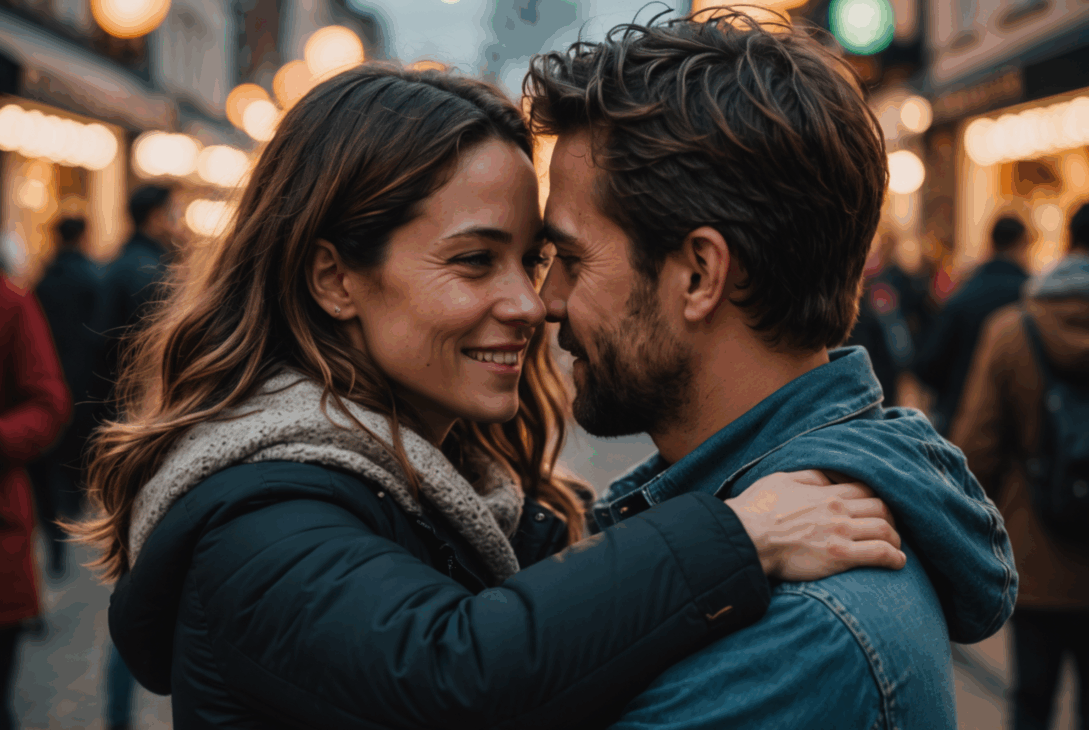Maybe you think a hug is just a pleasant physical contact, but scientists, psychologists and relationship coaches would quickly prove you wrong. Body language works like an invisible megaphone for our emotions and intentions. Whether you’re hugging a partner, a friend or a colleague, in that moment you reveal more about yourself than you could during an entire coffee break. Get ready for a fascinating journey into the depths of non-verbal communication – you’ll find that your hug alone can decide whether a relationship blossoms or slowly withers.
Body language as a relationship tool
Before we dive into the individual types of hugs, let’s remember one crucial fact: touch releases oxytocin, the hormone known as the “molecule of love.” It calms stress, strengthens trust and deepens emotional bonds. The quality of a hug can therefore be the key to whether a partner feels loved, a friend understood or a child protected. Yet most of us short-change hugs because we underestimate their psychological depth. With a single chest-to-chest squeeze you send a complex message that your counterpart’s brain processes faster than you can say “I love you.”
Types of hugs and their meaning
Psychologists distinguish an entire gallery of hugs, each carrying its own emotional calling card. Below you’ll find the most common “body greetings” and their coded messages:
- Bear hug – You wrap each other tightly and your chests press together. Decoding: unshakable trust, strong feelings and absence of barriers.
- Side hug – Arms over shoulders, hips side by side. Most common among friends or couples still feeling each other out. Expresses support and togetherness, but also some caution.
- One-armed “half hug” – A quick arm thrown around the shoulders. Can be friendly yet superficial; it says, “I like you, but I’m in a hurry.”
- Back-pat hug – Often among men. Patting creates distance and limits intimacy. Indicates respect, not romance.
- Rocking hug – One gently rocks the other. Signals care, a desire to protect and often appears between parents and children or lovers in the early stages of a relationship.
- Slow, long hug – Features a deep breath, closed eyes and reluctance to let go. It’s the peak of intimacy, where words lose meaning.
- “A-frame” (tent) hug – Chests don’t touch at all; you connect only at the shoulders. Warning sign: emotional distance or insecurity is likely.
What we (un)consciously communicate
Each type of hug activates a different combination of bodily sensations and emotional reactions. Within milliseconds the recipient’s brain evaluates:
- Intensity of pressure – A stronger squeeze means a greater need for protection or a stronger desire for closeness.
- Duration of contact – More than 20 seconds rapidly increases oxytocin levels and cements positive feelings.
- Surface area of contact – The more of the body that touches, the deeper the message: “I’m completely open to you.”
- Synchronization of movement – If you both sway at the same tempo, your nervous systems mirror each other, which supports empathy.
The combination of these factors creates a non-verbal “sentence” that the other person often decodes more accurately than a verbal declaration. And now a question that may alarm you: What if your hug says something different from your mouth? A mismatch between verbal and non-verbal messages is immediately perceived as insincerity.
Romantic vs. friendly hugs
Distinguishing whether a hug is “just” friendly or already charged with a more erotic spark isn’t always easy. Watch for these differences:
- Pelvic position – In a romantic hug the hips often come together, whereas a friendly one leaves a gap.
- Hands – Lovers slide their hands down the back, sometimes lower; friends usually stay between the shoulder blades.
- Duration – A friendly hug is shorter and ends simultaneously, whereas a lover’s hug lingers and often finishes with a shared exhale.
- Eye contact – After a romantic hug an intimate eye-to-eye look follows; in a friendly hug you usually glance away.
If you experience a situation where a “friend” lingers in the hug longer than is appropriate, he’s probably testing whether you’re open to deeper feelings. Here body language clearly outruns words.
When hugs are missing – and what it means
Chilliness in hugs can be a clear indicator that something is breaking in the relationship.
- Avoiding touch – A partner who doesn’t hug even when greeting? Emotional distance and possibly unspoken conflicts.
- Shortened hug length – When a once-long squeeze shrinks to a few seconds, it signals declining intimacy.
- Mechanical patting – Turning a loving embrace into a compulsory formality reveals boredom or hidden dissatisfaction.
- Complete absence – If you barely touch at all, it’s time for an open conversation or couples therapy.
Lack of physical closeness also affects health. Studies show that people without regular hugs have higher cortisol levels, suffer more often from anxiety and sleep worse. The good news? It’s solvable – just start with a simple “cuddle.”
Conclusion: Pay attention to how people touch you
You may have thought until now that words are the alpha and omega of communication. The truth is that the body shouts while the mouth whispers. Next time someone hugs you, slow down and notice: How tightly do they hold you? Do they breathe in the same rhythm? And how quickly do they pull away? These tiny details will reveal what’s hiding behind his or her seemingly inconspicuous gestures. Whether it’s friendship, family or love, one rule applies universally – a quality hug is the cheapest and fastest way to feel you’re not alone in the world. So don’t be afraid to open your arms and show someone how you really feel.

